External websites:
Electron Ion Collider User Group
Documents:
The EIC Users Group maintains a list of documents relevant to the EIC, spanning accelerator, detector, and theory topics. Below is a subset, highlighting the milestones of the project.
EIC Documents |
|
|---|---|
EIC Documents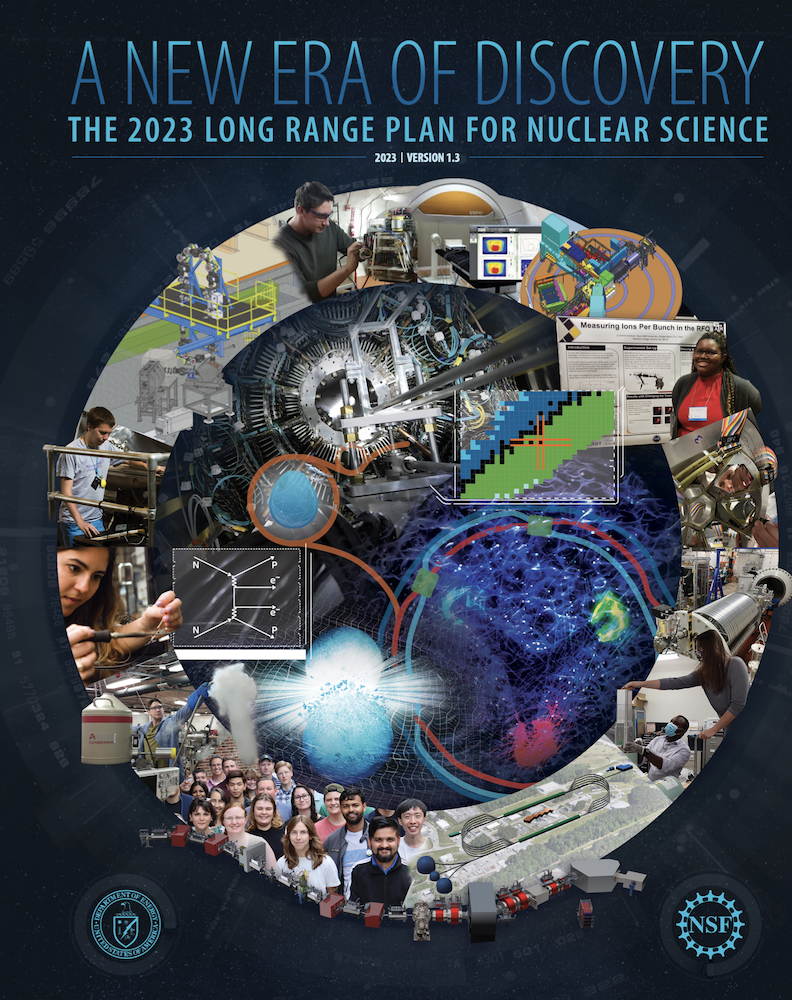 |
EIC DocumentsA New Era Of Discovery: The 2023 Long Range Plan For Nuclear Science (2023) emphasizes the expeditious completion of the EIC as one of its key recommendations, highlighting thescientific opportunities and cutting-edge technologies at EIC and its first detector, ePIC, which are attracting physicists from across the globe. |
EIC Documents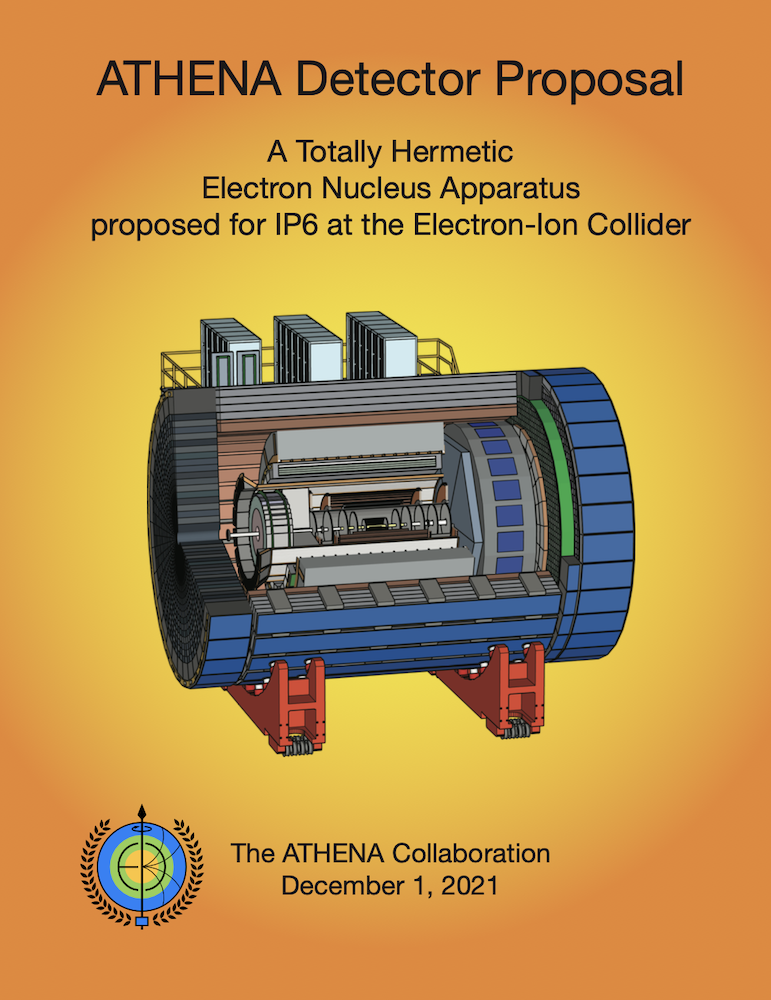 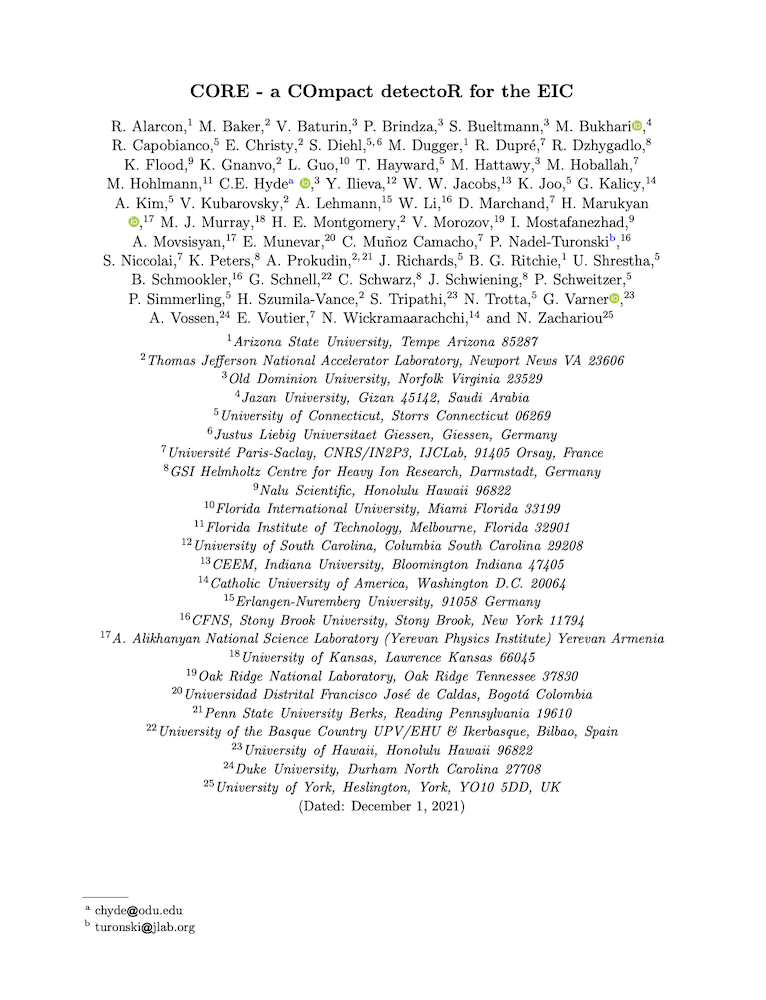 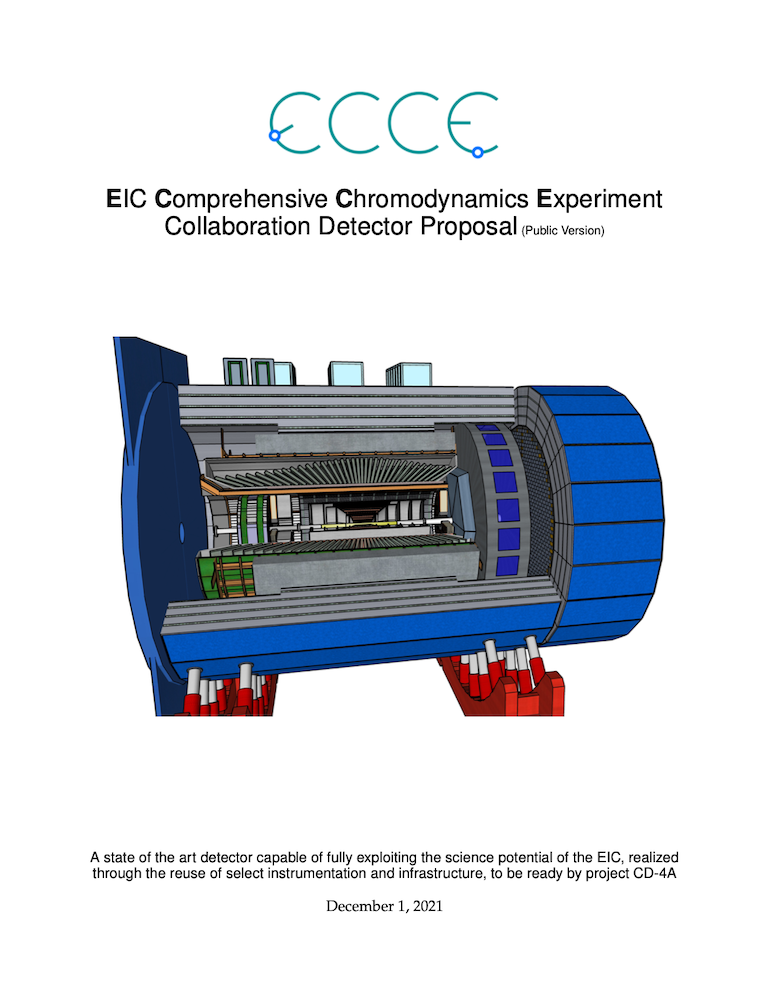 |
EIC DocumentsThe ATHENA, CORE, and ECCE detector proposals (2021) were submitted as projects that could form the first detector at the EIC. Each proposal combined multiple different detector technologies. From these initial groups and proposals the ePIC experiment was delineated and its collaboration formed. |
EIC Documents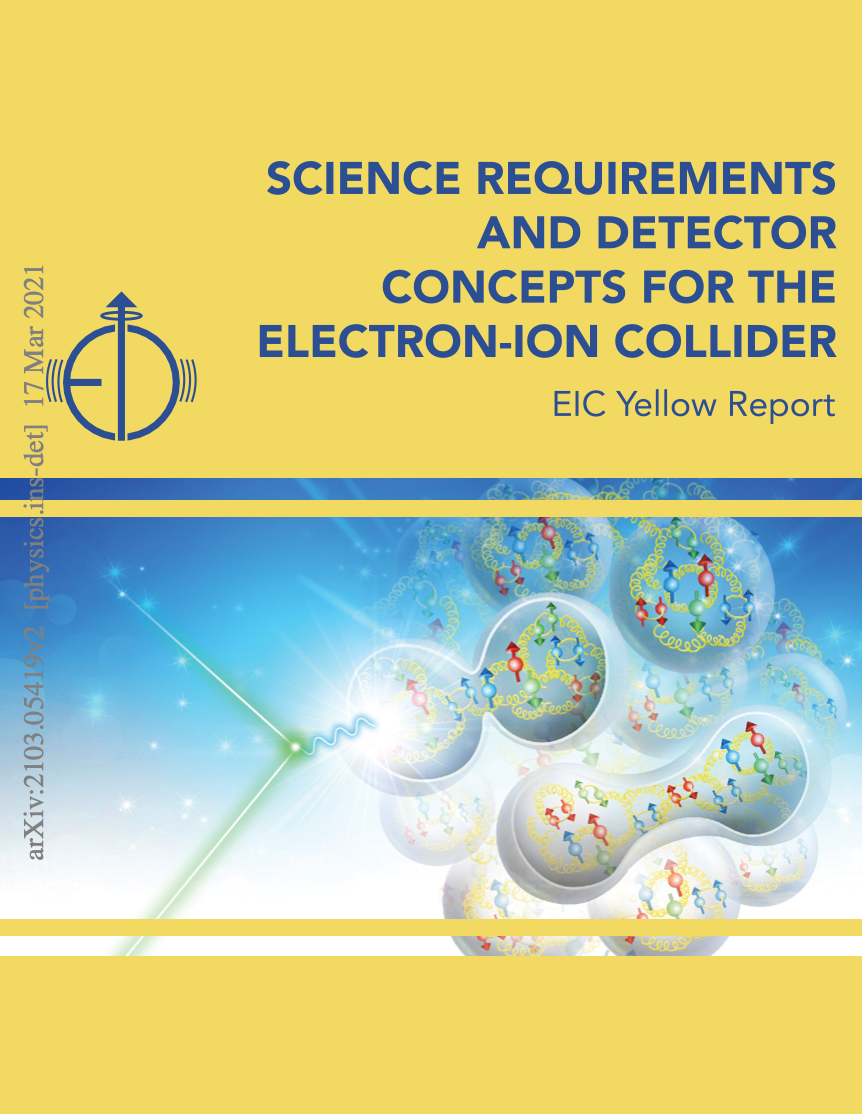 |
EIC DocumentsThe EIC Yellow Report (2021) describes the physics case, the resulting detector requirements, and the then-evolving detector concepts for the experimental program at the Electron-Ion Collider (EIC). |
EIC Documents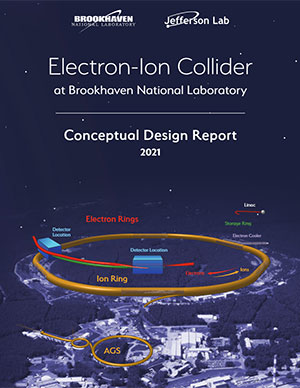 |
EIC DocumentsThe Conceptual Design Report for the Electron-Ion Collider (2020)provides the technical reference design for the EIC as of 2020, meeting the key requirements: |
EIC Documents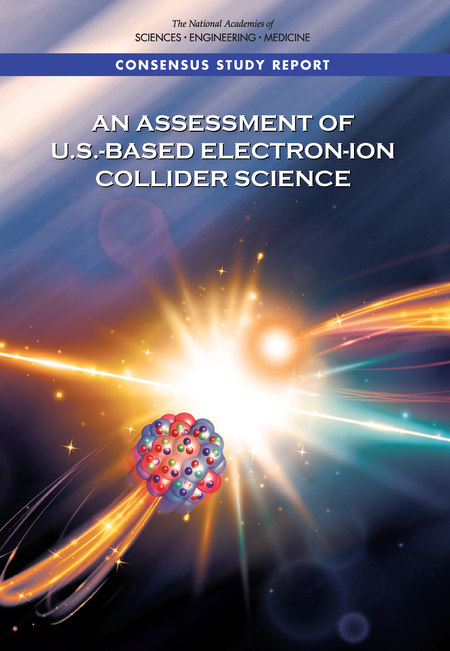 |
EIC DocumentsThe National Academy of Sciences Report (2018)evaluates the importance and urgency of the EIC's scientific program as well as its
impact in a global context. It highlights the EIC's inegral role in the agenda of
nuclear physics. In addition, it highlights the expected advances in accelerator science
and the technology of nuclear science, and other fields of accelerator-based science
and society, from medicine through materials science to elementary particle physics. |
EIC Documents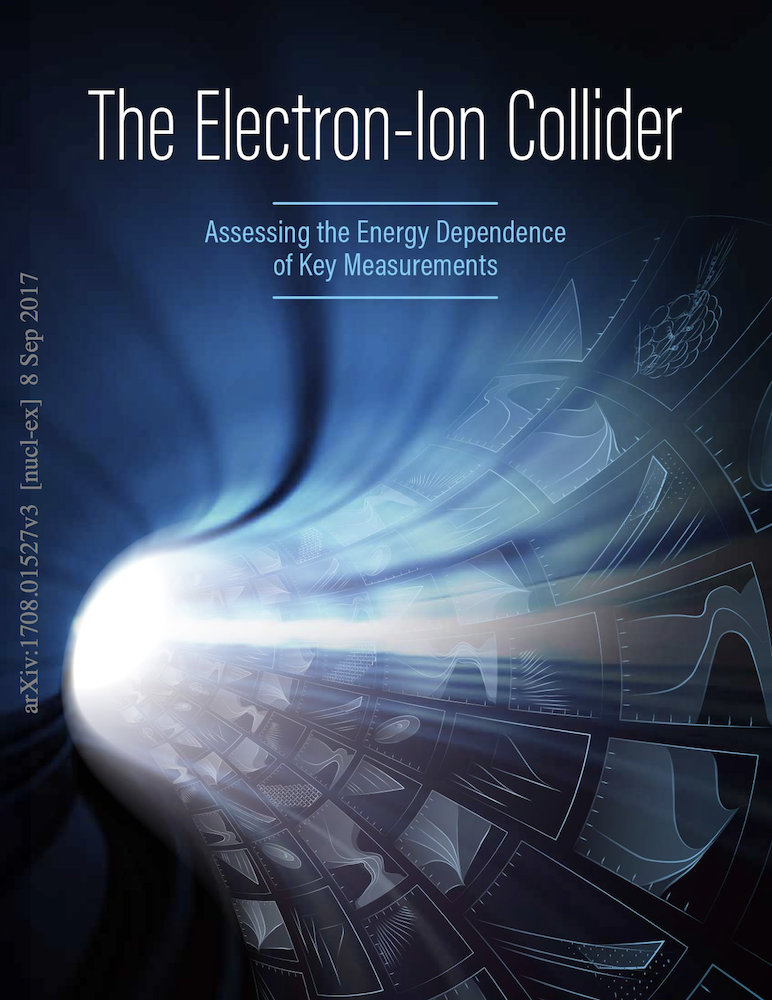 |
EIC DocumentsThe EIC - Assessing the Energy Dependence of Key Measurements (2017)described the energy dependence of key measurements accessible with the machine described in the EIC Whitepaper, and provides detailed simulations of the measurements, demonstrating the need to value of making the energy range and reach of the EIC as large as practically feasible. |
EIC Documents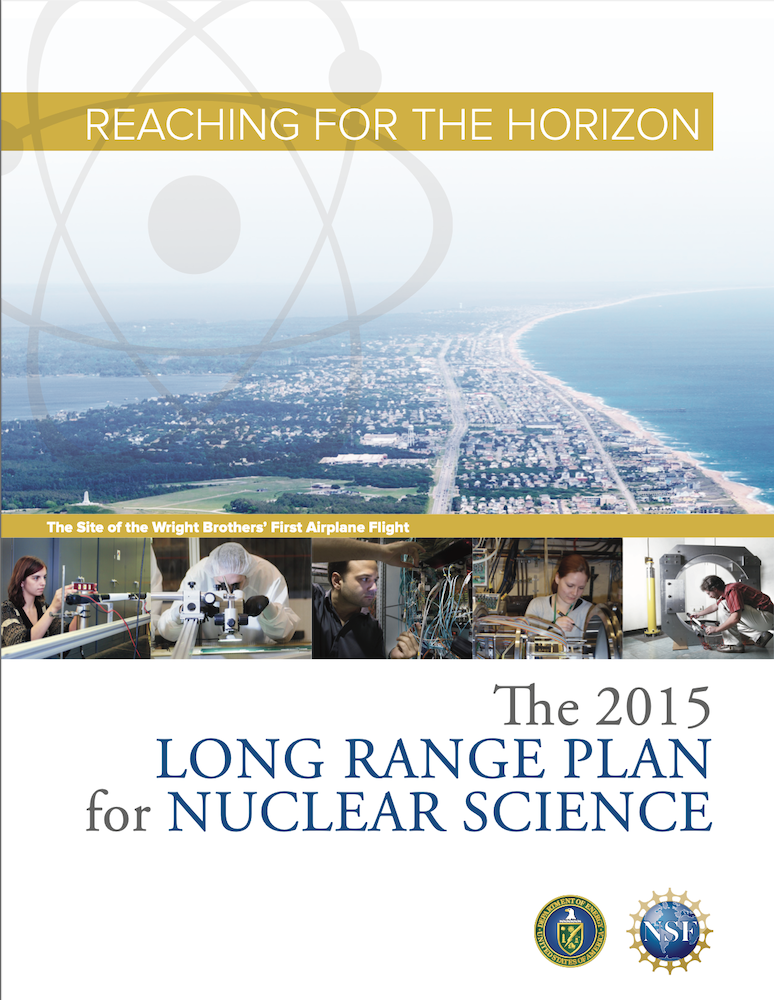 |
EIC DocumentsReaching for the Horizon: The 2015 Long Range Plan for Nuclear Science recommend a high-energy high-luminosity polarized EIC as the highest priority for new facility construction following the completion of FRIB, highlighting its ability to, for the first time, precisely image gluons in nucleons and nuclei, reveal the origin of the nucleon spin and explore the new QCD frontier of ultra-dense gluon fields, with the potential to discover the Color Glass Condensate, form of gluon matter predicted to be common to all nuclei. |
EIC Documents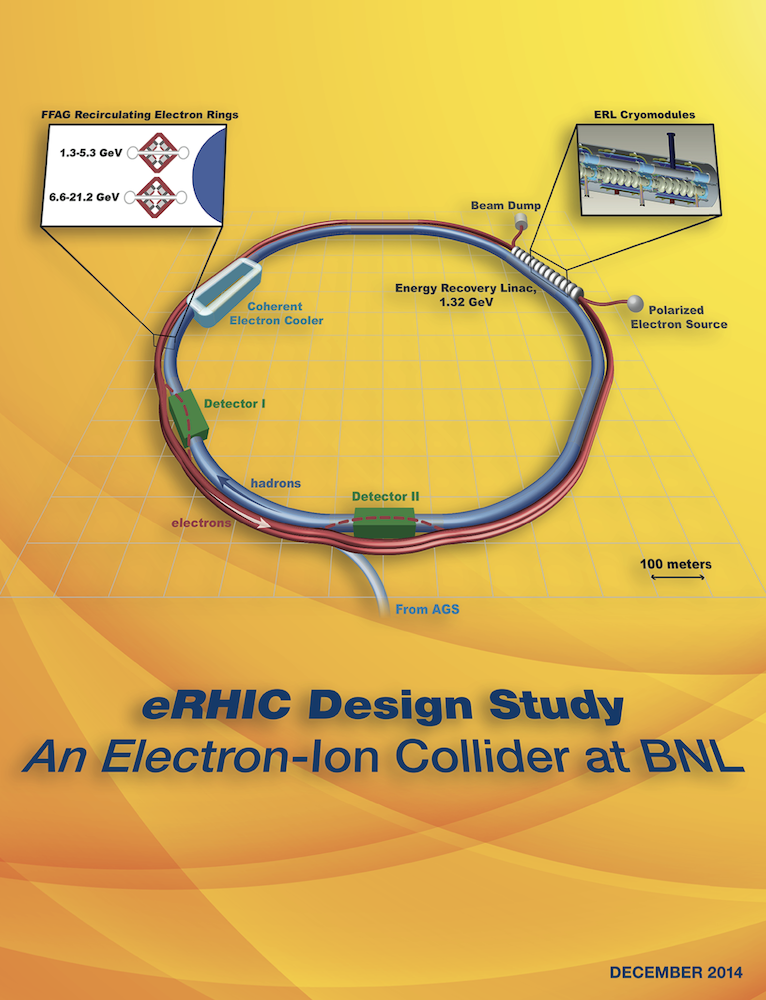 |
EIC DocumentsThe eRHIC Design Study (2014)presented Brookhaven National Lab's plan for eRHIC, an electron-ion collider which would build on the existing RHIC facility there. In addition to describing the capabilities, it discusses various on R&D efforts for the project, and key detector requirements and design ideas for an experimental program capable of making the “golden measurements” of the 2012 white paper. |
EIC Documents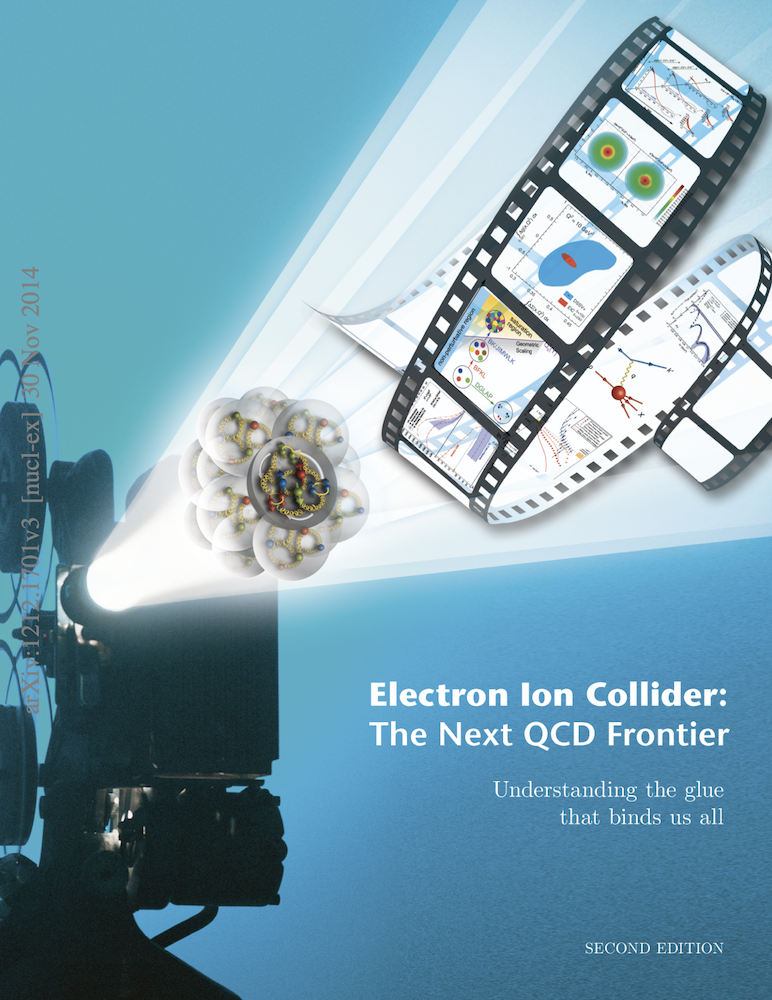 |
EIC DocumentsThe EIC Whitepaper (2012) presented the science case for the then-proposed Electron-Ion Collider (EIC), following up its inclusion in the 2007 NSAC Long Range plan. It contains a description of a few "golden" physics measurements along with accelerator and detector concepts required to achieve them. |

